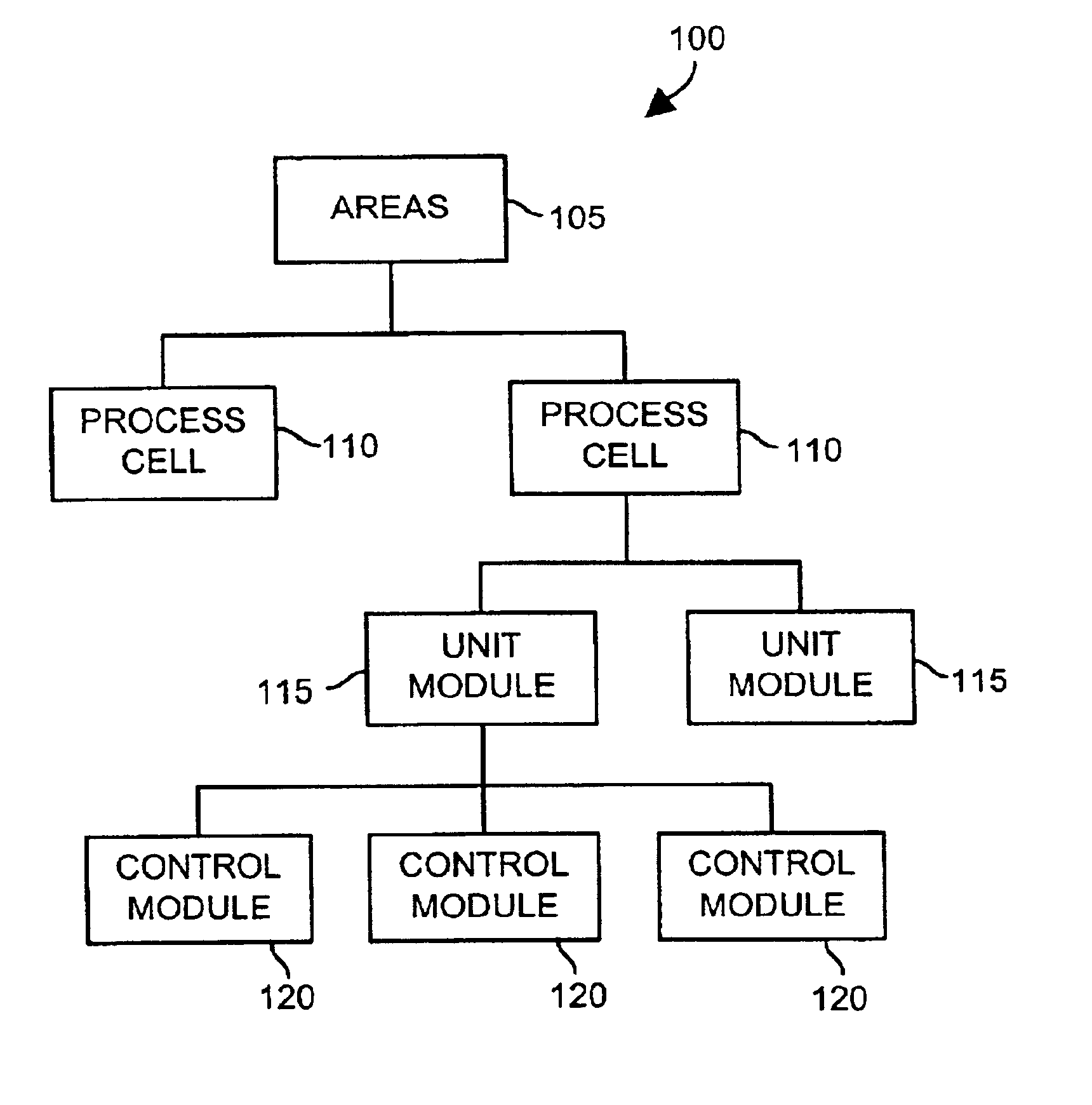Hierarchical failure management for process control systems
a process control system and hierarchy technology, applied in the direction of electric controllers, instruments, ignition automatic control, etc., can solve the problems of system to resume process execution, unit module knowledge is typically not provided, and the hierarchical model typically does not establish any run-time communication relationship between unit modules and control modules. to achieve the effect of minimizing or eliminating unnecessary stoppages of a process
- Summary
- Abstract
- Description
- Claims
- Application Information
AI Technical Summary
Benefits of technology
Problems solved by technology
Method used
Image
Examples
Embodiment Construction
While a hierarchical failure management technique is described in conjunction with a process control system that executes batch processes, the hierarchical failure management technique described herein may be advantageously used within a variety of process control systems, including, for example, process control systems that carry out substantially continuous processes such as heating and ventilation, building security, sewage treatment, power generation, etc.
Before discussing the hierarchical failure management technique in greater detail, it is important to recognize that conventional failure management techniques typically do not include any run-time mechanism by which unit modules or units automatically receive failure information from subservient control modules. Furthermore, these conventional failure management techniques typically do not process failure information in any manner prior to sending the failure information from the control modules to unit modules. Instead, these...
PUM
 Login to View More
Login to View More Abstract
Description
Claims
Application Information
 Login to View More
Login to View More - R&D
- Intellectual Property
- Life Sciences
- Materials
- Tech Scout
- Unparalleled Data Quality
- Higher Quality Content
- 60% Fewer Hallucinations
Browse by: Latest US Patents, China's latest patents, Technical Efficacy Thesaurus, Application Domain, Technology Topic, Popular Technical Reports.
© 2025 PatSnap. All rights reserved.Legal|Privacy policy|Modern Slavery Act Transparency Statement|Sitemap|About US| Contact US: help@patsnap.com



